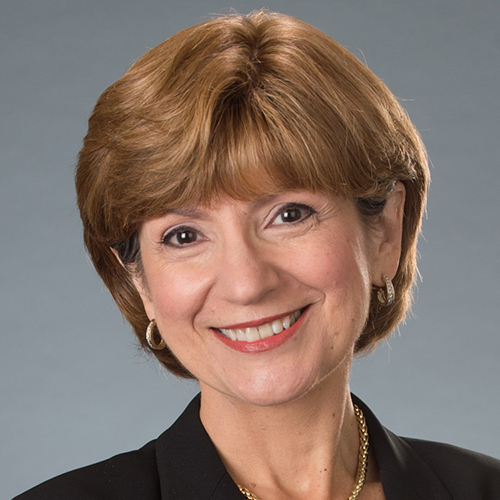Earlier this week, I was privileged to be a part of Volunteers of America’s third annual discussion on aging issues. I was on a panel with Arianna Huffington, Huffington Post co-founder and editor-in-chief; Mike King, National President and CEO of Volunteers of America, Inc.; and Lorraine Cortés-Vázquez, AARP Executive Vice President of Multicultural Markets and Engagement. Our topic: How our nation’s public policies affect older Americans, especially women. Medical journalist and best-selling author Dr. Bob Arnot moderated the discussion, which addressed how to improve the U.S. health care system, how women can best prepare for old age and care for their loved ones, and how we can press for better coordinated care that lessens the burdens on family caregivers.
During the panel, I talked about the work of the Campaign for Better Care to improve care for the oldest and sickest patients, and described the good-news-bad-news reality of women aging in America. The good news is that women are living longer. The bad news is that they are living poorer and sicker. And when you take a hard look – in particular at the lot of older women and their family caregivers – it isn’t a pretty picture. In the workplace, women experience persistent discrimination and lower earnings on average than men. In the workforce, they face employer policies that make it extremely difficult to be both wage-earners and caregivers. In the obstacle course that is the U.S. health care system, they are forced to jump through hoops to secure the care they need.
My fellow panelists each brought valuable, personal perspectives on caring for the aged. Arianna Huffington talked about the cultural issues involved, as well as the distinct joy she derived from caring for her own late mother. Mike King seconded those sentiments, adding that caring for his mother was an honor.
Lorraine Cortés-Vázquez stressed that we need to educate ourselves to better prepare for aging, and create livable communities that offer long term care services. She also raised an issue that doesn’t get nearly as much attention as it should: the fact in that in some underserved communities, doctors’ offices are vanishing, forging an even stronger link between poverty and poor health.
We also discussed the current debate about the federal deficit. I wanted to stand up and cheer when Mike stated a principle that we all should embrace: “We’re not going to balance the budget on the backs of the older Americans who built this country. It’s not fair. We have to stand up and say that.”
Some time after Mike made that statement of conscience about what we must not do, a woman in the audience asked a great question about what we should do. What kind of strategies can we employ, she asked, to advance change in Congress? I told her what I believe: that one way to influence lawmakers and policymakers is through the Campaign for Better Care. We launched this nonpartisan campaign last year to organize Americans across the political spectrum to make their voices heard. By recounting their real-life struggles in the U.S. health care system, members are giving policymakers both the incentive and the information needed to create change. Older women and their caregivers desperately need a health care system that delivers timely, coordinated, appropriate, affordable care. The Campaign is focused on changing our health care system so that the oldest and sickest patient can get this kind of care and live in their communities for as long as possible.
I commend Volunteers of America for organizing such a fantastic discussion. In preparation for this week’s event, Volunteers of America commissioned a nationwide survey to find out how the elderly and their caregivers are faring during these tough economic times. Its white paper on the findings – “Boomer Bust 2011: Still Unprepared and Unaware” – is well worth reading, and passing along. If you weren’t able to attend the panel, an archived webcast of it is available here.


